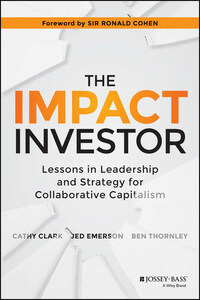Cover design by Michael J. Freeland
Cover image: © Wavebreak Media/Jupiter Images
Copyright © 2015 by John Wiley & Sons, Inc. All rights reserved.
Published by Jossey-Bass
A Wiley Brand
One Montgomery Street, Suite 1200, San Francisco, CA 94104-4594 —www.josseybass.com
No part of this publication may be reproduced, stored in a retrieval system, or transmitted in any form or by any means, electronic, mechanical, photocopying, recording, scanning, or otherwise, except as permitted under Section 107 or 108 of the 1976 United States Copyright Act, without either the prior written permission of the publisher, or authorization through payment of the appropriate per-copy fee to the Copyright Clearance Center, Inc., 222 Rosewood Drive, Danvers, MA 01923, 978-750-8400, fax 978-646-8600, or on the Web at www.copyright.com. Requests to the publisher for permission should be addressed to the Permissions Department, John Wiley & Sons, Inc., 111 River Street, Hoboken, NJ 07030, 201-748-6011, fax 201-748-6008, or online at www.wiley.com/go/permissions.
Limit of Liability/Disclaimer of Warranty: While the publisher and author have used their best efforts in preparing this book, they make no representations or warranties with respect to the accuracy or completeness of the contents of this book and specifically disclaim any implied warranties of merchantability or fitness for a particular purpose. No warranty may be created or extended by sales representatives or written sales materials. The advice and strategies contained herein may not be suitable for your situation. You should consult with a professional where appropriate. Neither the publisher nor author shall be liable for any loss of profit or any other commercial damages, including but not limited to special, incidental, consequential, or other damages. Readers should be aware that Internet Web sites offered as citations and/or sources for further information may have changed or disappeared between the time this was written and when it is read.
Jossey-Bass books and products are available through most bookstores. To contact Jossey-Bass directly call our Customer Care Department within the U.S. at 800-956-7739, outside the U.S. at 317-572-3986, or fax 317-572-4002.
Wiley publishes in a variety of print and electronic formats and by print-on-demand. Some material included with standard print versions of this book may not be included in e-books or in print-on-demand. If this book refers to media such as a CD or DVD that is not included in the version you purchased, you may download this material at http://booksupport.wiley.com. For more information about Wiley products, visit www.wiley.com.
Library of Congress Cataloging-in-Publication Data has been applied for and is on file with the Library of Congress.
ISBN 978-1-118-86081-6 (cloth); ISBN 978-1-118-86071-7 (ebk.); ISBN 978-1-118-86075-5 (ebk.)
When I reflect on impact investing and its prospects of growth to a size somewhere between the $100 billion of microfinance and the $3 trillion invested in private equity and venture capital worldwide, I often think back to the origins of venture capital – the starting point of my professional life.
Venture capital was a response to the needs of tech entrepreneurs, just as impact investing is a response to the needs of a new generation of social entrepreneurs who seek to make a meaningful difference in improving people's lives.
No one had thought of creating ten-year, illiquid funds, investing in small companies with very limited track records of performance, led by young people with no business experience. The response came because people sat around a table and said, “We see the future, and we have to provide the tools for it.” When I set up what became Apax Partners in 1972, few in Europe knew what an entrepreneur was, and fewer still believed that entrepreneurs would achieve much of consequence for our daily lives. Forty years later, they have completely transformed our world.
The microchip, the PC, the mobile phone, and the Internet, with its search engines and instant access to information and people, have revolutionized the way we live. They have brought a transformation as momentous as that which followed the creation of the alphabet and the invention of printing. Entrepreneur-led companies have overtaken those that led their fields for nearly a century. IBM was overshadowed in the space of a couple of decades by a start-up named Apple, which is now the largest company in the world by market cap; Microsoft, Amazon, Google, and Oracle made it from start-up to being among the world's top thirty companies in just three decades.
The tech entrepreneurial revolution was driven by innovation and risk taking. It transformed the mind-set of governments about how economic growth should be achieved. In the United States, in the space of twenty-five years, it has been estimated that fifty million jobs were lost by smokestack industries, while sixty million jobs were created by new companies.








